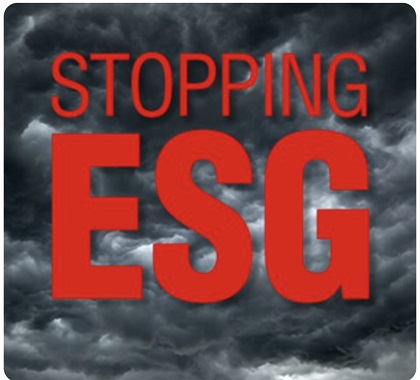A proposal to diversify the options available to donors for Alabama’s Education Scholarship Program, a tax-credit scholarship (TCS) program, has passed the state Senate and now awaits a vote in the House of Representatives. The proposal would not raise the program’s $30 million annual cap, but it would allow companies and corporations to also receive credit on the utilities gross receipts tax and would increase the credit allowed on income tax liability from 50 percent to 75 percent. It would also broaden the range of qualifying expenses under the program to include textbooks, uniforms, tutoring services, transportation, summer school, and school supplies.
The purpose of these changes is to help ensure the program reaches the $30 million cap. While donors gave $25.8 million in 2015, donations dropped to $19.9 million in 2016. Thirty-nine percent of Alabama families with children qualify for the Education Scholarship Program, and more than 3,600 scholarships were awarded in 2016. The projected scholarship value for the 2016–17 school year is $4,869.
A TCS differs from other school choice options in two significant ways. First, the money a TCS uses comes entirely from private sources. This allows a TCS program to avoid state or federal prohibitions against sending money to religious institutions. Second, these programs offer the “cleanest” school choice option, meaning the one with the least burdensome government regulations, because they are not funded by tax collections.
A study released in October 2016 by EdChoice “estimates the fiscal effects” of 10 of the nation’s 21 tax credit scholarship (TCS) programs (comprising 93 percent of all awarded scholarships). It found TCS programs have saved “state governments, state and local taxpayers, and school districts” between $1.7 billion and $3.4 billion through 2014. This comes out to between $1,750 and $3,000 saved per student.
An Alabama Federation for Children study released in January 2017 found the Education Scholarship Program has saved Alabama $29.9 million combined in 2014 and 2015. For every year that the program’s $30 million cap is reached, the study says the state would realize a net savings of $16.1 million. This would increase to $29.1 million per year if the program’s cap were raised to $50 million.
Only 26 percent of Alabama 4th graders and 17 percent of 8th graders tested “proficient” in math on the 2015 National Association of Education Progress (NAEP) test, also known as the “Nation’s Report Card.” Only 29 percent of 4th graders 26 percent of and 8th graders tested proficient in reading. These results show Alabama’s public school system is failing to educate roughly eight out of 10 4th grade and 8th grade students to a proficient level in reading and mathematics.
Alabama’s troubling performance on NAEP underscores the desperate need for the state to expand school choice opportunities far beyond what is currently available. Too many public schools in Alabama are failing to adequately prepare students for productive lives. Parents should be allowed to choose the schools their children attend and should not be penalized financially if that choice is a private religious or secular school.
Outside of the Education Scholarship Program, private school choice in Alabama is literally nonexistent. While these changes to the Education Scholarship Program are small, they still represent a step forward for private school choice in the Yellowhammer State and would allow more Alabama families a greater opportunity to meet the unique education needs of their children. When parents are given the opportunity to choose, every school must compete and improve, which gives more children the opportunity to attend a quality school.
The following documents provide more information about tax-credit scholarships and education choice.
The Tax Credit Scholarship Audit: Do Publicly Funded Private School Choice Programs Save Money?
https://heartland.org/publications-resources/publications/the-tax-credit-scholarship-audit-do-publicly-funded-private-school-choice-programs-save-money
In this audit, EdChoice Director of Fiscal Policy and Analysis Martin Lueken updates previous work examining the fiscal effects of private school choice programs on state governments, state and local taxpayers, and school districts. Lueken’s report analyzes savings from tax credit scholarship programs, which allow individuals and businesses to reduce their state tax liability by making a private donation to a nonprofit organization that provides scholarships for children to attend private schools of their choice. This audit looks at 10 tax credit scholarship programs operating in seven states between 1997 and 2014. These 10 programs serve 93 percent of all students participating in tax credit scholarship programs nationwide.
A Win-Win Solution: The Empirical Evidence on School Choice (Fourth Edition)
https://heartland.org/publications-resources/publications/a-win-win-solution-the-empirical-evidence-on-school-choice-fourth-edition?source=policybot
This paper by the Friedman Foundation for Educational Choice details how a vast body of research shows educational choice programs improve academic outcomes for students and schools, saves taxpayers money, reduces segregation in schools, and improves students’ civic values. This edition brings together a total of 100 empirical studies examining these essential questions in one comprehensive report.
2016/17 School Choice Report Card
https://heartland.org/publications-resources/publications/201617-school-choice-report-card
This report card published by the American Federation for Children scores 27 active non-special-needs voucher, scholarship tax-credit, and education savings account programs against ideal standards for program quality. The report is an excellent tool policymakers and researchers can use to help improve education programs and maximize student participation.
Taking Credit for Education: How to Fund Education Savings Accounts through Tax Credits
https://heartland.org/publications-resources/publications/taking-credit-for-education-how-to-fund-education-savings-accounts-through-tax-credits?source=policybot
This Cato Institute paper shows how legislators can design an education savings account (ESA) that is privately funded through tax-credit-eligible contributions from taxpayers, similar to tax-credit scholarship programs that already exist in states across the country. Tax-credit-funded ESAs would empower families with more educational options while enhancing accountability and refraining from coercing anyone to financially support ideas they oppose. Because they are funded through voluntary contributions, rather than public funds, tax-credit scholarships have been found by the U.S. Supreme Court and by every state supreme court that has considered the issue to be within the bounds of the U.S. Constitution and most state constitutions. In states that have Blaine amendments, which greatly restrict the ability of lawmakers to create some school choice programs, tax-credit ESAs could be a lifeline to families in need.
Research & Commentary: Indiana School Choice Parental Satisfaction Should Lead to More School Choice
https://heartland.org/publications-resources/publications/research–commentary-indiana-school-choice-parental-satisfaction-should-lead-to-more-school-choice?source=policybot
In this Research & Commentary, Heartland Policy Analyst Tim Benson examines an expanded, follow-up study to a 2014 report by EdChoice that examines why Indiana parents choose to take advantage of the state’s Choice Scholarship Program voucher and use it to send their children to private schools.
Competition: For the Children
https://heartland.org/publications-resources/publications/competition-for-the-children
This study from the Texas Public Policy Foundation claims universal school choice results in higher test scores for students remaining in traditional public schools and improved high school graduation rates.
The Fiscal Effects of School Choice Programs on Public School Districts
https://heartland.org/publications-resources/publications/the-fiscal-effects-of-school-choice-programs-on-public-school-districts?source=policybot
In the first-ever study of public school districts’ fixed costs in every state and Washington, DC, Benjamin Scafidi concludes approximately 36 percent of school district spending cannot be quickly reduced when students leave. The remaining 64 percent, or approximately $8,000 per student on average, are variable costs, changing directly with student enrollment. This means a school choice program attaching less than $8,000 to each child who leaves a public school for a private school actually leaves the district with more money to spend on each remaining child. In the long run, Scafidi notes, all local district spending is variable, meaning all funds could be attached to individual children over time without creating fiscal problems for government schools.
How School Choice Programs Can Save Money
http://www.heritage.org/Research/Education/wm727.cfm
This Heritage Foundation study of the fiscal impact of voucher programs notes Washington, DC vouchers cost only 60 percent of what the city spends per pupil in government schools. The study estimates if the states with the top eight education expenditures per pupil adopted voucher programs similar to the Washington, DC program, they could save a combined $2.6 billion per year.
How School Choice Can Create Jobs
https://heartland.org/publications-resources/publications/how-school-choice-can-create-jobs?source=policybot
Examining five South Carolina counties, Sven R. Larson found school choice programs were associated with gains of up to 25 percent in youth self-employment. Larson writes, “School Choice raises academic achievement and reduces the problems and costs associated with high school dropouts. But it also has a decisively positive impact on youth entrepreneurship and could provide a critical boost for the economies of poor, rural counties.”
Nothing in this Research & Commentary is intended to influence the passage of legislation, and it does not necessarily represent the views of The Heartland Institute. For further information on this subject, visit School Reform News, The Heartland Institute’s website, and PolicyBot, Heartland’s free online research database.
The Heartland Institute can send an expert to your state to testify or brief your caucus; host an event in your state; or send you further information on a topic. Please don’t hesitate to contact us if we can be of assistance! If you have any questions or comments, contact John Nothdurft, Heartland’s director of government relations, at [email protected] or 312/377-4000.




